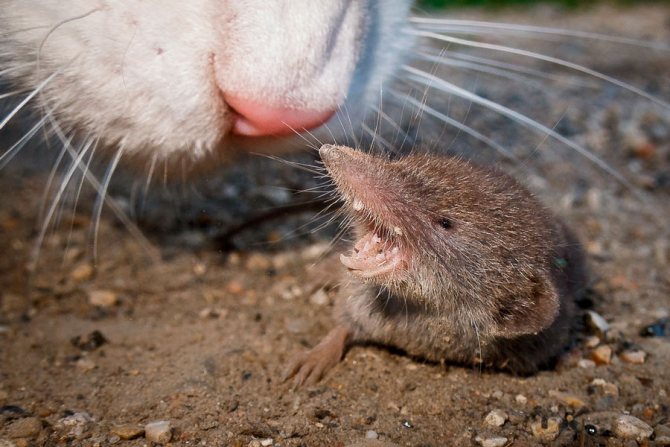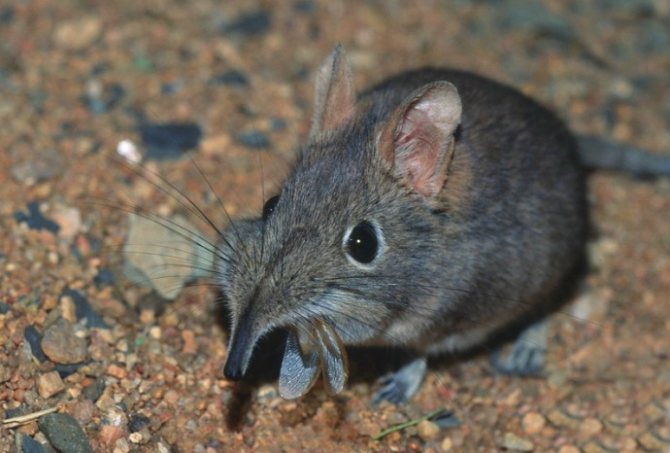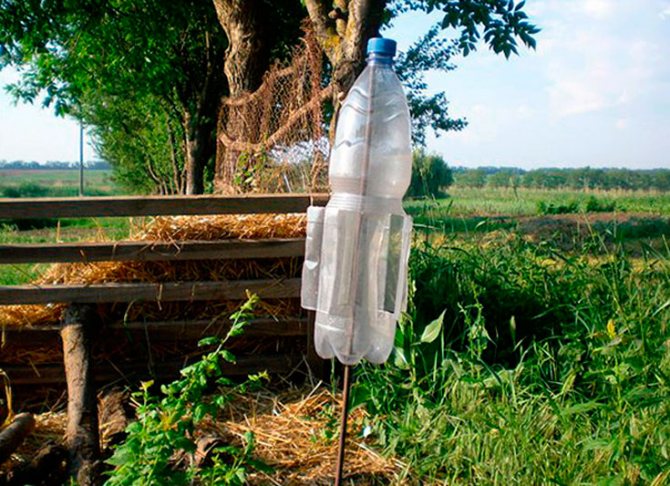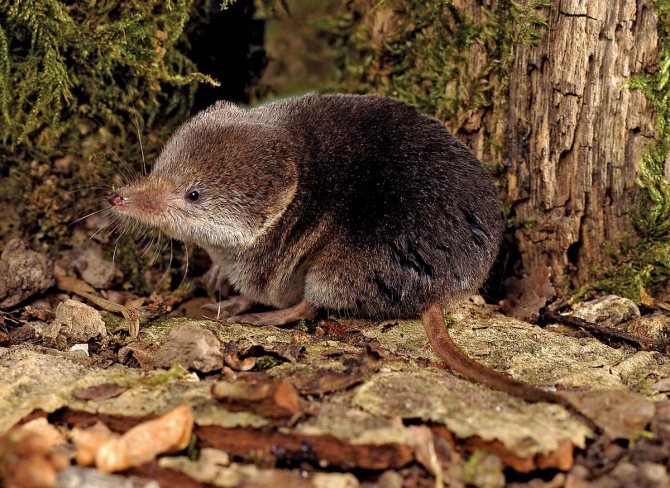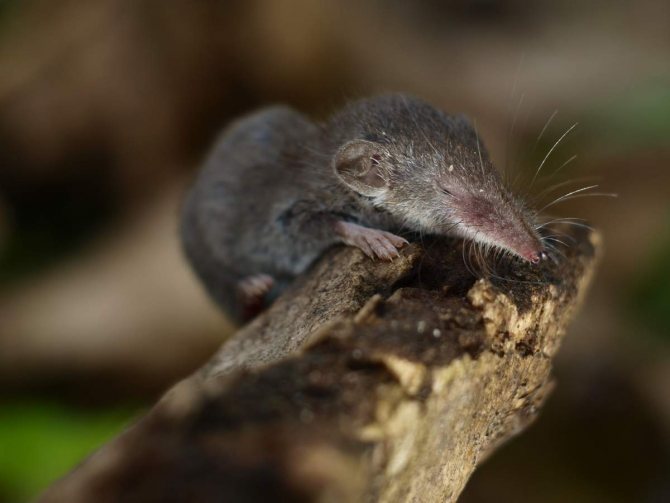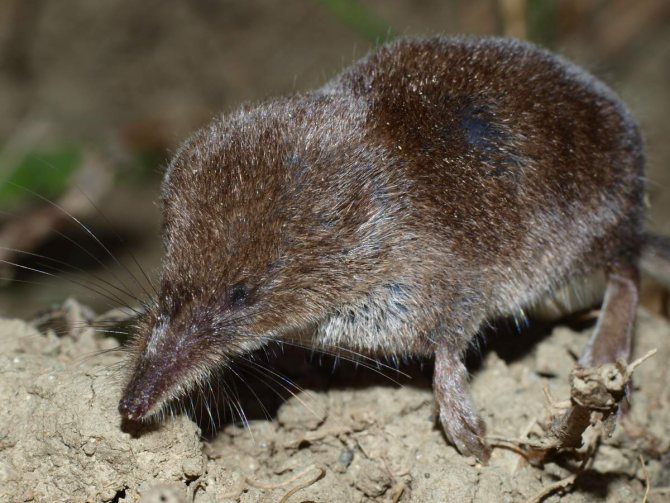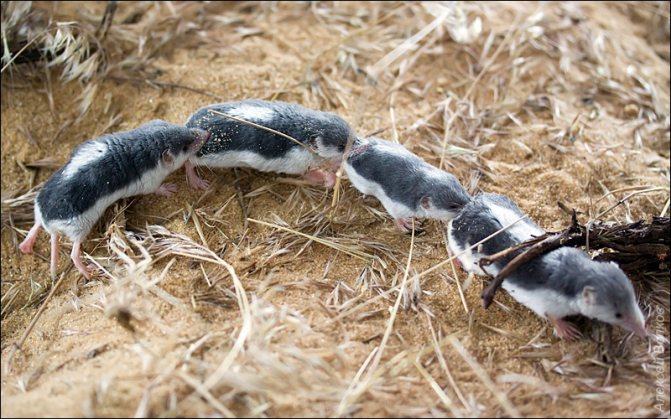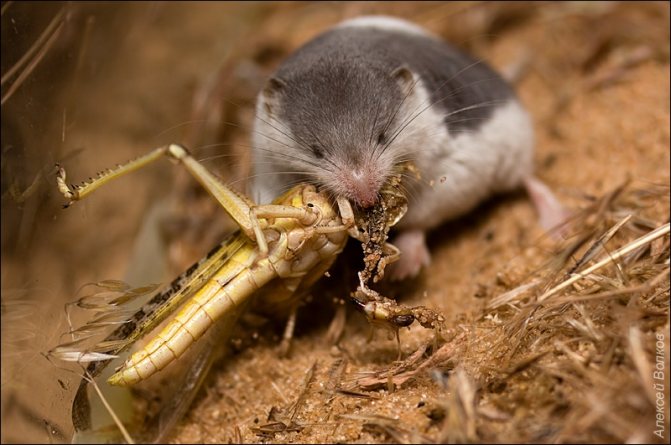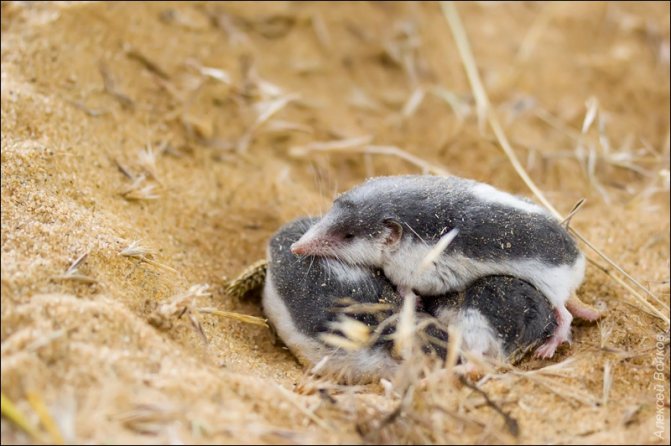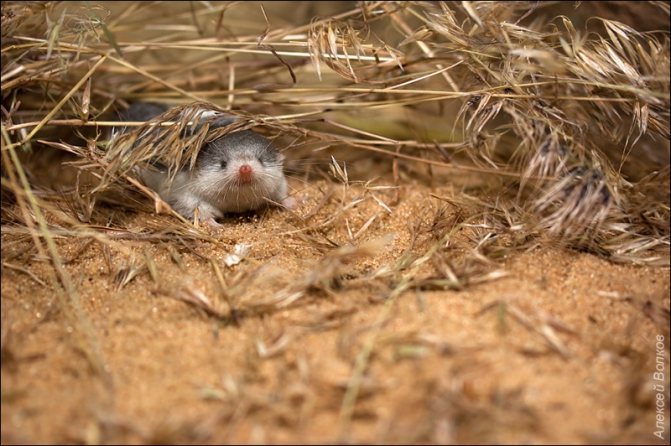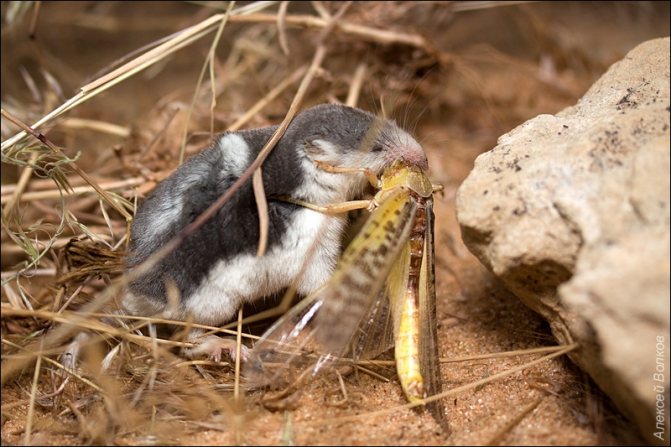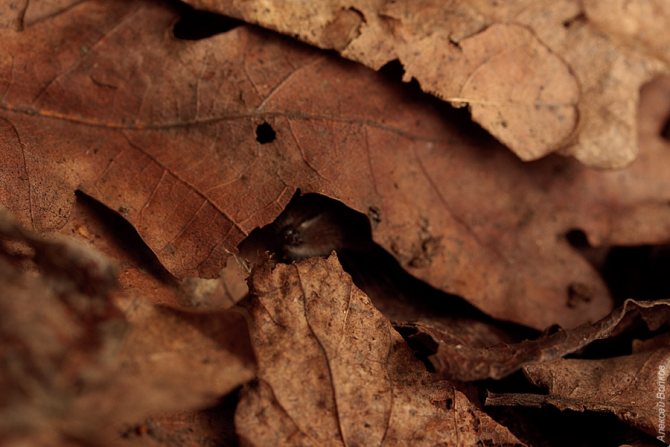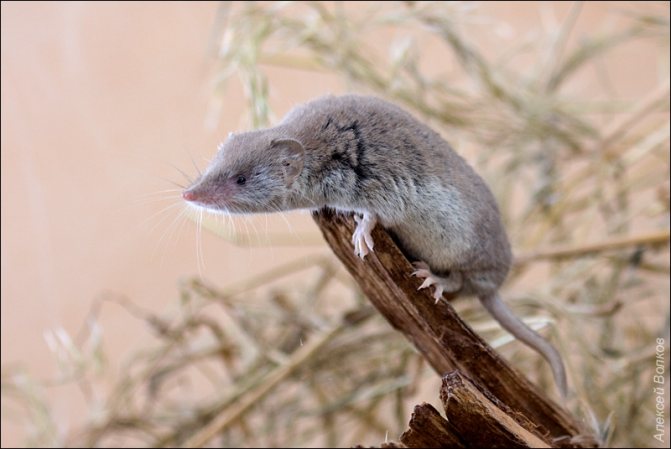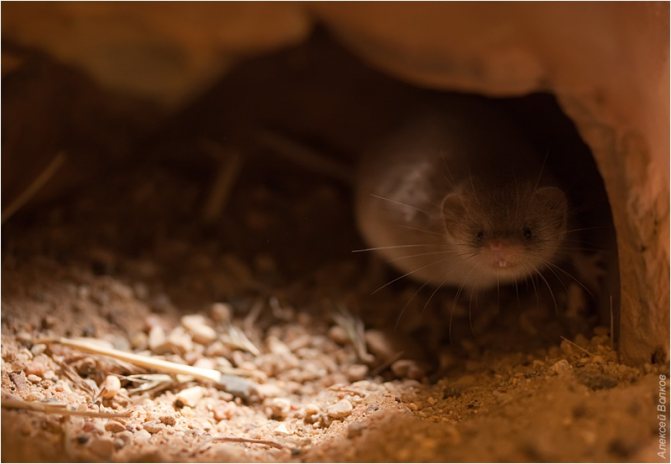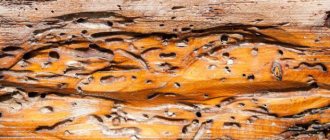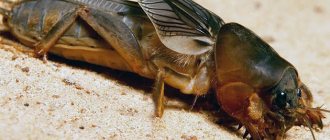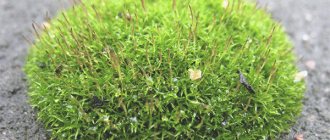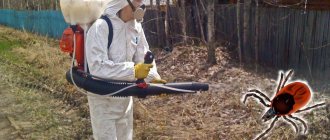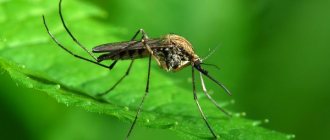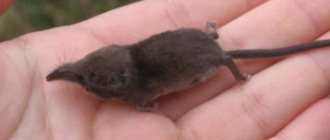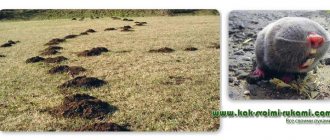Folk remedies for fighting moles and shrews
Moles and shrews are inventive and cunning animals, and not all folk methods of dealing with them are effective and capable of driving them out of their summer cottage forever. Some traps are simply bypassed by rodents, pulling out other directions of underground passages. It is advisable to use several methods of control at the same time in order to increase their effectiveness. There are two factors that pests cannot tolerate: noise and harsh, unpleasant odors.

The mole net is dug in to a depth of 1-1.2 meters
1. Fighting moles with the help of an unpleasant smell for them. Moles have an excellent sense of smell and do not like the smell of rotten fish. By placing the remains of rotten fish, for example, herring, in the pest's hole, you can scare it away and drive it out of the site. In addition, moles cannot stand the harsh aromas of some plants: legumes, garlic, a flower from the family of the Grouse imperial lilies. By planting these crops on the site, you can scare off moles and shrews. Specific smells will also help in scaring away pests: kerosene, ammonia or naphthalene. Place rags soaked in these products in the wormholes. This method does not give a 100% guarantee of getting rid of moles, since animals are able to dig new workarounds and bypass the bait.
2. We install a barrier at the summer cottage. An effective protection of the site from the penetration of small animals is an obstacle in the form of a fine metal or plastic mesh around the perimeter of the garden, which must be dug to a depth of 1.2 meters. Leave 10-15 cm of mesh on the surface, which can be attached to the fence. Thus, moles and shrews will not be able to dig underground passages to the fenced-in area.


Noise mole repeller from plastic bottles
3. Fighting moles with water. You can get rid of underground pests by flooding their holes with water. This method cannot be called effective, since a large amount of water (up to 150 liters) will be required to completely flood the tunnel. And since the animals dig holes rather quickly, they are able to dig new passages above the water level, and when the water leaves, they can continue their vital activity. In addition, there is a possibility of flooding the site.
Advice! Some breeds of dogs (fox terrier, dachshund) are hunters from nature, they can effectively rid your site of animals. Hunting for them will bring pleasure to your pets, and you will benefit.
4. Fighting moles with traps and loud noises. Since the animals cannot stand noise and loud sounds, a scarer in the form of a windmill will help get rid of them, which you can make yourself. To make it, you need a metal rod, which must be stuck into the ground near the mole's mink at least 30 cm deep. Put a metal or tin can on top of the rod. When the wind blows, the repeller will make a sharp sound, shaking the ground, preventing the animals from feeling calm, and over time they will leave the inhabited area.
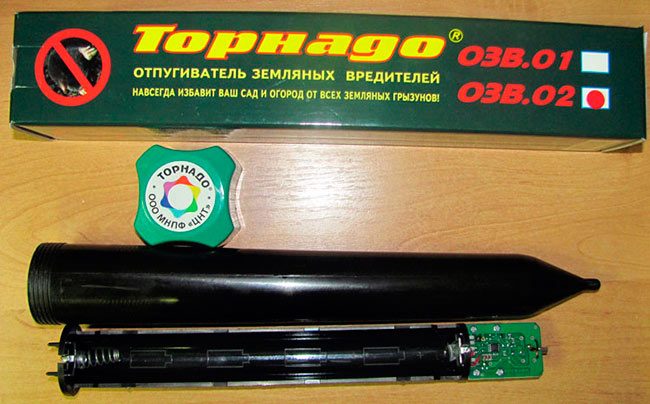

Ultrasonic Mole and Shrew Repeller
5. Ultrasonic mole repeller. There is a lot of heated debate about the effectiveness of this device on the forums of gardeners and gardeners.For someone, after the installation, the moles disappear completely, and sometimes the desired effect is not achieved at all. After reviewing the reviews for such devices, we can conclude:
- they should be powerful enough, ideally powered from an outlet;
- cheap "bollards" offered by Chinese stores rarely have any effect;
- scarers must be protected from rain and moisture, most of them fail very quickly;
- it is believed that moles get used to the sound, so repellents have a short-term effect.
You can independently make the so-called "mole-catcher", which is effectively used by many summer residents to catch moles. To make a trap, a pipe is used, which is the same diameter as the hole. On the sides of the pipe there are special doors that work in the "entrance only" mode. The essence of the "mole trap" is that the animal, having climbed inside the pipe, will not be able to get out of it. A trap is the most humane method of fighting rodents, allowing you to catch animals without killing them.
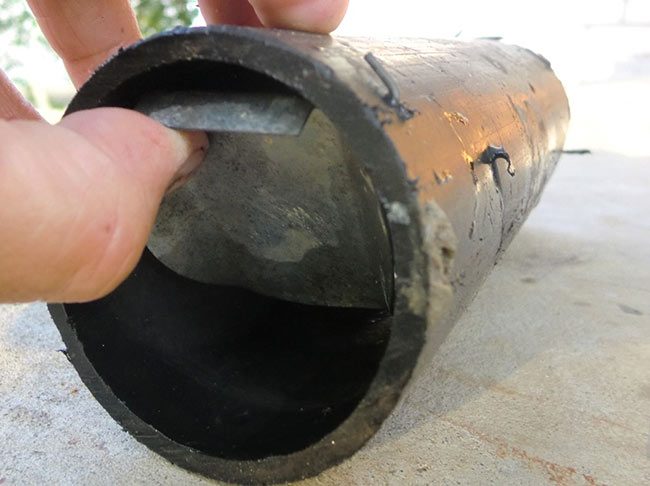

Mole trap from pruning pipe
What does a shrew eat
Animals are omnivorous, the main food is insects, their larvae, earthworms. They do not disdain small frogs, lizards, cubs of small rodents. Food is found by smell and touch. Shrews are constantly looking for food. During the day, they eat an amount of food that is 2 or more times their own weight. They sleep briefly between meals. There are about 80 such cycles per day. Without food, shrews die in 7-9 hours, or fall into a short-term stupor with a decrease in body temperature. They do not hibernate.
Signs of the appearance of shrews on the site
All clear signs that this animal is inhabiting your garden or lawn completely coincide with the presence of other underground inhabitants - moles, voles, etc. The only exact fact of presence is a copy seen with his own eyes. If you find not only underground passages, but also eaten tubers, you can definitely stop sinning on shrews with shrews - they do not eat it.
It often seems that a whole flock of these uninvited guests is operating at the dacha, but in fact it may be the only one, since it prefers a solitary way of life and hunting. That, however, does not prevent her from bringing up to 14 offspring 1-2 times a year, which in a month will become sexually mature and it is not a fact that they will go far in search of their own territories.
Folk remedies for fighting the mouse
Gardeners and gardeners have long been trying to come up with a scheme to remove underground pests forever, so they came up with their own ways of dealing with these animals. Of course, they cannot be called very effective, but they are suitable as a temporary measure.
Remove by flooding
Many gardeners and summer residents use this method of dealing with shrews. It is very simple: rodent minks are simply flooded with water. This method is not particularly effective, since the animals are small enough and underground they can have many holes in which they hide.
Get rid of deep digging
Sometimes, to combat shrews, the owners use the method of deep digging of the site. This method is very time consuming, but quite effective. However, do not think that the shrew will leave the site for good. But it is quite possible to reduce their number. As soon as the animals find themselves homeless, they will want to leave this site in search of another place. But this does not always happen.
Scare away the smell
Shrews have an excellent sense of smell and do not like the smell of rotten fish. On the site, you can spread pieces of rotten fish, deepening it into the burrows. Hearing an unpleasant smell, pests will begin to leave the site.
You can also use the smells of kerosene, naphthalene or ammonia to fight the pest.Place the material soaked in these compounds in the holes, but do not count on a 100% result, since the shrews can make new paths for themselves and bypass the bait.
Installation of an obstacle
In order to protect the site from shrews, an obstacle can be installed. A fine mesh made of plastic or metal is perfect for this. It must be installed along the perimeter of the garden, dug to a depth of 1.2 m. On the surface, you can leave 10-15 cm of the net. This design will block all underground passages for the shrew.
Homemade traps
If it is not possible to purchase ready-made traps, then you can try to make them yourself at home. There are several options for homemade traps.
A wire trap is the simplest design. To make a trap, take a piece of small diameter pipe. Install the shutters at both ends. They have to work inward. As soon as the animal buries its nose in one of the shutters, it will slightly open its way until it rests against the other shutter. Thus, the pest will not be able to open the exit for himself and will be trapped. In addition, a spacer must be installed near the entrance to the burrow. As soon as the rodent touches it, the fixation mechanism is activated. Now it is only necessary to remove the caught rodents from the traps from time to time.
Description of the animal
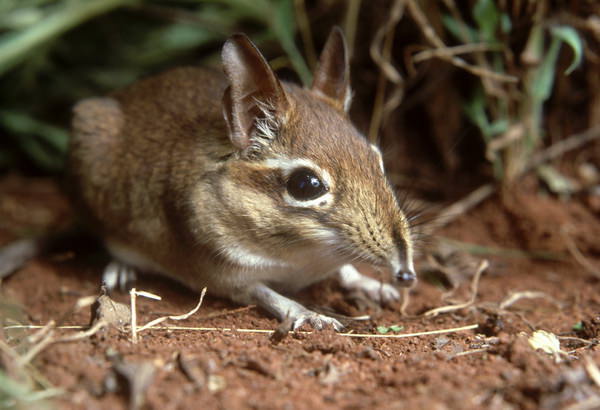

The shrew is the smallest carnivorous mammal. The animal is often confused with a mouse, but the small individual is distinguished by its characteristic elongated muzzle with a proboscis. The length of the animal is amazing. The largest variety grows up to 18 centimeters. The weight of a shrew depends on the season: the maximum weight of an individual in the summer is 15 grams. The animal has small eyes. The animal does not see well: in fact, it is blind. The ears are hidden in the wool. The tail is covered with short thick fur, longer than the body and much thicker than the mouse. The legs are thin.
Folk methods of fighting shrews
The shrew is a cunning and intelligent animal, therefore it is quite difficult to get rid of the shrew with folk remedies. In this case, an integrated approach is recommended. The use of sparing methods will allow you to get rid of animals only for a certain period of time. Traditional methods are primarily attuned to the use of unpleasant smells and sounds.
Strong odors. Shrews have an excellent sense of smell, so spoiled food can be placed on the site, which will scare away insectivores. For example, you can spread rotten fish near holes. You can also use fragrances that are pleasant or neutral for a person. These include garlic, onions, kerosene, or naphthalene. It is necessary to soak rags in these substances and spread them in those places where shrews were seen. When using garlic or onions, you can spread the sliced heads or squeeze the juice onto a rag.
Plants with a pronounced odor. To scare away shrews from the site, you can plant legumes, garlic or lilies around its perimeter. Animals do not tolerate these smells well, and prefer to bypass such areas.
Block. It is also possible to make an effective barrier to the penetration of shrews by mechanical means. For example, along the perimeter of the site, you can make an obstacle using a metal or plastic mesh. Burrows and passages are dug for the animal at a considerable depth, so it is necessary to dig in the net at least 120 cm. It is also necessary to leave 15-20 cm of the net on the surface, attaching it to the fence. This will protect the backyard area from the penetration of shrews along the soil surface.
Water traps. You can also get rid of underground inhabitants with the help of water. You can flood burrows with it. But it should be understood that for the complete flooding of the shrews tunnel, at least 10 buckets of water will be required.In addition, shrews can very quickly dig new passages, and when the water is absorbed into the ground, they return to their old dwellings. And using this amount of water can lead to flooding of the site.
Dogs. Some hunting dog breeds, such as dachshunds, are effective at scaring away shrews. In addition, for a pet, such a hunt will bring a lot of pleasure. But don't forget that dogs can also harm garden plants and lawn grass. Therefore, in some cases, more damage from dogs than from shrews.
Loud sounds. You can also fight shrews on the site with the help of loud sounds. Shrews cannot stand noise, so you can make your own scarers based on a metal rod and a tin can. Stick the rod into the soil to a depth of at least 30 cm, and put a jar on it. In the wind, the bank will rumble and shake the ground, so the animals will feel discomfort, and after a while they will leave the site forever.
Folk remedies for shrews are effective only in the case of a complete approach. They can also be combined with chemical and mechanical control methods.
What plants does a shrew dislike
There are such plants, when planted, the rodents begin to leave the territory in a hurry. For example, shrews really do not like beans and euphorbia. You can plant as many peas and beans as possible in the garden. Most likely, it will not be possible to completely and permanently get rid of small animals, but their number will definitely decrease.


Marigold
You can also use ordinary marigolds to fight shrews in your summer cottage. To do this, you need to dry the plant, grind it finely and scatter it over it before digging the site. The shrew is frightened off by the smell that these flowers emit. Marigolds can also be planted along the edges of the garden, then the animals are unlikely to settle in this territory. Thus, you will gain a double benefit: scare away shrews and decorate the site with charming marigolds that bloom for a long time and delight the eye.
How to fight?
There are “old-fashioned” ways of fighting, for example, scattering rotten pieces of herring on the ground. It is believed that a strong unpleasant smell will help get rid of them. And from the owners the same ... If, of course, you are not confused by this aroma, then try to leave the herring for a few days.
One of the popular, cheap ways to get rid of shrews in a summer cottage is shown in this video:
Deep digging of soil about 70 cm has the effect. shovel. But if the site is not large, then of course you can work hard. Try to fall asleep eggshells in the hole or feed a neighbor's cat, preferably a tricolor cat, which is better than usual to hunt mice and rats.
It is believed that the pest does not like legumes, spurge and common marigolds. Plant them along the edges of the garden so that the animals do not enter, besides, the flowers will delight you with their variegated outfits.
Some were helped by the shrews, to sketch out burning coals, or to dig in a three-liter empty jar near the hole, like a trap, on the same level with a plot. How to deal with a shrew in the garden and get rid of it? There are several effective ways.
How to find a nest?
Shrew photo:
Most of these rodents live in humid places. Shrews live one at a time.
They dig holes on their own and occupy the empty housing of others (moles, mice).
They populate in hollows of stumps and in fallen tree trunks, under dead wood, rarely in human buildings.
The nest is insulated with dry leaves or blades of grass. Each of them has its own feeding area, several tens of square meters in size.
Chemical methods
It is not very humane to use poison and you need to resort to it last, but there is effectiveness from the use.Purchase poison for mice or poisonous food such as "Rat Death", "Nutcracker", "Anti-Rodent Hunter". It must be poured into each hole or spread out near the entrance to the dwelling.
IMPORTANT! Pay attention to the presence of children, pets before using the poison, it is dangerous!
Poisonous gases or gas bombs, but if the tunnel is branched, then the small pest will simply run away. Therefore, you need to use it immediately, as soon as the shrew chooses the site. The principle is the same with filling holes with water.
Pour diesel or gasoline into the mink. Some gardeners use smoke bombs. They try to use sharp-smelling reagents like "Creatol", "Ekar", "Pomethanol", etc. In general, everything that has a strong smell, but it is not recommended to use near plantings of plants, trees, fruit bushes.
IMPORTANT! The use of gasoline and diesel fuel can cause a fire
Mechanical
You can get rid of shrews in the country or summer cottage with the help of traps and traps, which are usually used with bait for rats and mice. Mole repeller is also suitable for shrews. Mechanical means in the form of tin wheels are placed throughout the entire area, and they work in the presence of wind. The constant noise will inconvenience the shrews, which will cause them to move to a quieter place.
Electric scarers have the same properties as mechanical ones, but they work on electricity and can be turned on at will. Electronic scarers create low-frequency noise within 400 Hz with a radius of about 20 meters. It does not affect humans and domestic animals, but it is even more unpleasant for a shrew. They will react to such a sound quickly and immediately leave the site, taking with them moles, snakes, mice, etc.
Removing voles with poisons
Fighting shrews and other underground pests with the help of poisons is the most radical and effective measure to date to get rid of problems in the garden in the country forever. Good results have been seen with the use of poisonous agents such as:
- "Nutcracker";
- "Rat Death";
- Inta-Vir;
- Bitrex;
- "Hunter anti-rodent".


Hunter anti-rodent
Any of these drugs must be used as directed. Usually, the poison is placed in each hole, in addition, you can leave the drug near the entrance.
The preparation "Inta-Vir" represents 4 types of new generation mummifying baits in one package. Effective both indoors and outdoors. The bait "Bitrex" is good because it excludes the eating of the poison by pets (except for rodents). One package (600 g) is enough for 300 square meters of territory.
When using chemicals, observe safety measures, otherwise the poison can harm pets and even the health of children. When working with drugs, you should put on gloves on your hands, and a mask on your face. The product must be used strictly in the dosage indicated on the package.
What a shrew looks like: a brief description and photo of the animal
Shrews are small animals that resemble field mice in appearance. A characteristic difference is the very long nose - the proboscis. The difference doesn't end there. Mice - classic rodents, shrews and shrews (another name for the described mammals - named for the color of their teeth) are insectivorous. They feed exclusively on insects. Surprisingly, in order to function daily, they need to eat an amount of food several times their own weight. They have a surprisingly strongly increased metabolic process in the body. Throughout their lives, mammals are engaged in foraging, taking short breaks for sleep. If you deprive the animal of access to food, it will die in a few hours.
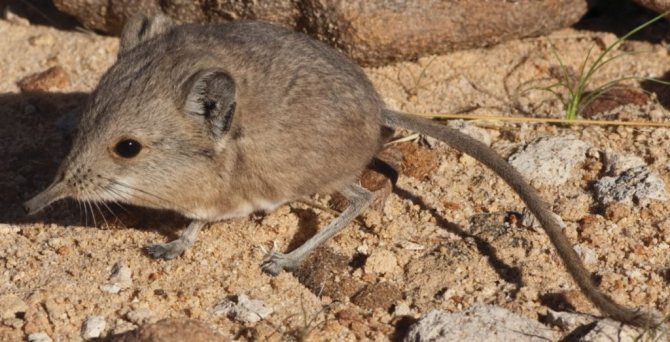

Shrews are small animals that resemble field mice in appearance.
The body of the animal is from six to nine centimeters long, the tail is about 5–7 cm. The color of the fur is dark brown, turning into red on the sides, the abdomen is gray. This color allows the animal to hide from enemies. Shrews live in well-moistened soil with a large number of worms and other insects. A favorable factor is the presence in the vicinity of the reservoir. In search of food per day, animals can dig up to 10 square meters of previously dug earth. In more difficult conditions and arid regions, they use the already dug passages of moles and other underground creatures.
Reproduction takes place 2-3 times a year. One litter can have from two to forty cubs. One can imagine how many shrews will appear by the end of summer, if no action is taken after their appearance.
Shrews harm to plants and earthworms
Earthworms play an important and useful role in the home garden. They loosen the soil, thereby providing oxygen to the roots. By processing the topsoil - this process is called bioturbation, annelids enrich the earth with useful substances. Many experienced gardeners specially bring earthworms to the garden to get a good harvest.
The appearance of a shrew is detrimental to all insects, as well as to earthworms, which are ideal food for small animals. Within a few days of their stay, shrews and shrews can destroy many living creatures living in the earth before.
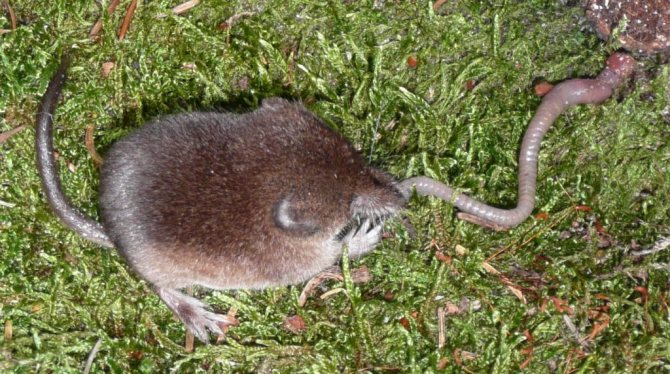

The appearance of a shrew is detrimental to all insects, as well as to earthworms, which are ideal food for small animals.
The described species of animals does not eat plants. However, when creating numerous underground tunnels, they injure the roots of fruit crops and flowers. A large number of shrews, and their number can increase 20 times during one season, has a detrimental effect on the appearance of plants. Weakened roots will not receive the necessary nutrients, respectively, the autumn harvest will be scarce. The appearance of a shrew in places where lawn grass is planted - in park fields or in adjoining private territories, will spoil the appearance of the surface - numerous burrows and small mounds of earth will appear - places for animals to come to the surface.
Benefits of shrews: control of insect pests, aeration and loosening
At the same time, a small number of shrews can, on the contrary, have a beneficial effect on the soil. Farmers are constantly faced with insect pests, which are often impossible to remove even with the use of chemicals. Moreover, such poisonous agents will spoil vegetables, as a result of which the whole point of growing healthy foods in your garden will be lost. So, shrews and shrews are engaged in eating caterpillars, beetles, larvae and the most hated enemies of potatoes - Colorado beetles. All living things that are on the ground or at a shallow depth become food for these small, insatiable mammals. While searching for food, the shrews loosen the ground by natural aeration. When such moves are few in number, they become excellent assistants for landowners.
However, it is important not to miss the moment when the population size on the site does not become detrimental to plants and beautiful lawns.
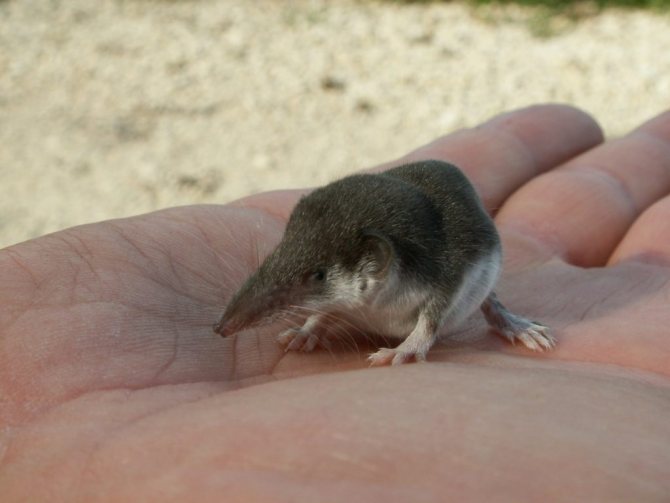

A small number of shrews can, on the contrary, have a beneficial effect on the soil.
You should not try to catch the shrew with your hands, its bite can be quite painful and life-threatening. Short-tailed shrews release a small amount of venom that can paralyze an insect or other small animal. On a person, poison does not produce the same effect, but in any case, such a test for the body will not bring anything good.
The benefits and harms of country rodents
The appearance of a shrew in the garden is of little benefit. The advantages of the appearance of the animal are that it destroys insects that are found in the garden. The positive aspects also include additional aeration of the earth due to the numerous underground mines and passages with which it permeates the entire garden. Despite this, the appearance of the animal on the site does not please gardeners at all.
The disadvantages of living this animal are much more significant. The shrew is capable of digging a huge number of burrows under the ground, it damages the roots of most plants, as a result of which the crop dies.


Destruction of dangerous insects
The main food of the pest is insects from the upper layers of the soil, but individuals are not averse to feasting on the fruits of human labor. Their diet also includes carrots, beets, other root vegetables, as well as the roots of tomatoes and peppers. In addition, the pest is not averse to feasting on plant seeds.
It is noteworthy that shrews do not live in families. Each representative has his own "hunting" area, reaching up to 900 square meters.
Given the fertility of animals, the owner of the site needs to take urgent measures as soon as at least one animal was seen in the garden or garden.
How to deal with a shrew on the site
Why shrews appear on a specific site is still unclear. Most likely, they just move from place to place in search of food. Also, matured baby shrews can run across from the neighboring area.
It is much more difficult to find a shrew on the site than a mole or a bear. This rodent digs smaller passages than even a vole mouse. And only having noticed a shrew directly crawling out of the mink, you can be firmly sure that this animal has settled on the site. We can say unequivocally the following - gnawed roots or tubers mean that any rodents have appeared on the site, but not shrews that do not eat vegetables.
There are many methods of controlling shrews. All of them were created empirically: landowners tried various means. Some were looking for options on how to scare off the animal without causing physical harm to it, while others applied more drastic measures, worrying primarily about preserving the crop and the appearance of the site.
Mechanical methods of dealing with shrews are devices or containers into which the animal falls and is not able to get out on its own. They are installed in places where mammals live or in areas where they are most often found. At such times, finding the nest of the shrew becomes the most important task of the landowner.
In order to avoid possible problems associated with the appearance of shrews, it is recommended to apply various preventive measures in advance.
The net will prevent the formation of hills from minks
Before sowing lawn grass or laying finished green rolls, lay a fine metal mesh in the bottom layer. In this case, even if an uninvited guest appears on the site, he will not be able to get out, thereby not spoiling the beautiful view of a flat meadow.
Experienced farmers dig in slate, roofing felt or other similar materials around the gardens. The depth of the underground part of the fence must be at least one meter. Otherwise, such an obstacle will not be effective.
There are a number of plants that smell unacceptable for the life of underground animals.
Shrews choose comfortable, well-moistened areas for life. However, they have a good sense of smell. There are a number of plants that have odors that are unacceptable for the life of underground animals. Planting such flowers or vegetables around the edges of your garden or flower bed increases the chances that mammals will bypass your grounds. These include:
- Onion and garlic;
- All types of legumes;
- Mint and wormwood;
- Daffodils;
- The imperial hazel grouse has a pungent root system smell, reminiscent of the smell of a fox - a famous hunter of burrowing animals. Sensing the approach of the enemy, the shrews will leave this place as far as possible;
- Siberian redwood, castor oil plant and others.
There are a lot of ways to deal with shrews. Not all of them are universal. In each case, a different method is suitable. Empirically, the owner of the personal plot determines what is acceptable for him. Rural residents most often use reliable methods in which animals die.
Prophylaxis


In this article, we looked at what a shrew looks like, a photo and a description of how to deal with folk and chemical drugs. However, before using poisonous drugs and other unsafe agents, it is recommended to use prophylactic agents.
An excellent preventive measure is the digging of the site. However, it needs to be carried out only until the moment the crops are planted. And digging only the places where shrew burrows have been found will also not yield results. It is necessary to carefully dig up the entire area. But this method does not give the desired results if you do not carry out the procedure regularly. However, after planting the plants, digging the entire site will be impossible.
Therefore, you can combine the digging of the site with its fence using a mesh or slate. A prerequisite is to deepen the fence into the soil so that the shrews cannot dig underground tunnels into the territory of the personal plot.
The shrew is not only a small pest that damages lawn grass and plant roots, but also a reliable assistant in the fight against insects. Its feature is the independent control of the insect population at the site. Most often, the shrew hunts in a small area until the number of insects decreases. Only then does she move on to the next one. This avoids depletion of the soil. Therefore, the fight against shrews is recommended only if the population threatens to destroy the crop. Otherwise, you should think about the benefits that a small animal can bring.
How to deal with a shrew in the garden: expert advice
When the animal settles in the summer cottage, it immediately begins to search for food. Therefore, many passages and burrows appear on it. In addition, the animal destroys roots or gnaws at the roots of plants. It often feeds on beneficial insects.
The main signs of the "settlement" of shrews at their summer cottage
Carefully examining their possessions, the summer resident may notice small heaps of loose soil in the garden. The main thing is not to confuse them with the "waste heaps" of moles or field mice. Usually the animal occupies a plot of land of about 50 m² and carefully protects its territory.
Most of them settle in empty mole holes. Although there are those who dig holes on their own. They do not hesitate to live in the hollows of cut trees or under dead wood. They insulate their nests with dry grass and fallen leaves. Some gardeners mistakenly attribute the destruction of cultivated plants to shrews. In fact, the mouse shrew feeds mainly on animal food, which it searches for with the help of its sense of smell.
However, in order to determine the presence of shrews, they must be seen. To do this, you will have to be patient and wait. After all, their minks are relatively small. And underground tunnels are barely visible under the soil layer.
Constant helper - chemistry
Practice shows that it is simply impossible to prevent the appearance of animals on the site. Even high fences or strong nets are not able to stop the invasion of "underground" neighbors. But how to deal with a shrew in your garden to protect your crop.
Chemicals come to the rescue:
- "Hunter Anti-Rodent". The briquette contains flour, cheese and special substances that attract the rodent.
- "Rat Death".A harsh poison used only as a last resort.
- "Nutcracker". A thick dense substance that is placed near the animal's mink.
Basically, they contain components that affect the respiratory system of animals or cause internal bleeding. After such a meal, the shrews die.
Using more humane methods
Since the animal brings not only harm, but also benefit to humans, there are other ways of how to deal with a shrew in the garden.
For this, a number of activities are carried out:
- crops with a pungent smell (mint, wormwood, lentils) are planted throughout the territory;
- naphthalene is scattered near the minks, kerosene is poured, or a piece of rotten fish is placed;
- to scare the animals, they use smoke bombs, gas bombs;
- several branches of freshly cut hemp are laid inside the hole, which, when rotting, emits a stench;
- poured with water, diesel fuel or kerosene, minks found in the garden.
Some summer residents make a scarer for shrews with their own hands from improvised items. To do this, use cans or cut plastic bottles. They are placed on a stick, up to 1 m high, so that when the wind gusts, they make violent sounds. Usually, shrews are afraid of unfamiliar noises and leave their "old" territory.
A wonderful way to protect your garden from shrews is to create an underground wall. Sheets of slate or metal are dug into the ground to a depth of 1.5 m along the entire perimeter of the site. As a result, the animals will not be able to enter the new territory from their neighbors.
An equally practical way to escort unexpected guests out of the garden is to plant several beds of onions and winter garlic. The pests do not like the scent of plants, so they will gradually leave the "inhabited" area. Some gardeners use various traps or traps. The bait is placed there, after which they wait for "their finest hour."
Having considered various ways to deal with a shrew in the garden, everyone is free to make their own decisions. Someone will want to get rid of the animal with the help of chemicals. Someone will make a mechanical repeller. Some will want to use folk remedies. In any case, you should take good care of animals that do not cause significant harm to people.
Appearance and structure
Shrew looks like a mouse: small head with tiny eyes, short neck, low-set body on thin legs, long tail. The dimensions of the animal are also "mouse" - its length rarely exceeds 10 cm... The entire body of the shrew is covered with short, thick brown hair.
Read about how to tell the difference between a shrew and other animals here.
Fur cover the animal is constantly lubricated with the secret of special glandsproducing a greasy substance with a repulsive odor. This is another cunning acquisition of a defenseless shrew, protecting her from attack formidable predators.
The shrews lost their sharp eyesight during evolution. They are guided by the sense of smell.using a nose located at the end of an elongated pointed muzzle as a navigator compass. The ears, set wide apart and pressed to the head, are necessary for the animal for echolocation.
The ends of sharp teeth animal covered with strong protective enamel brown, which grinds off by the end of the shrew's life. It is not surprising, because the little animal takes most of its short life at a meal.


